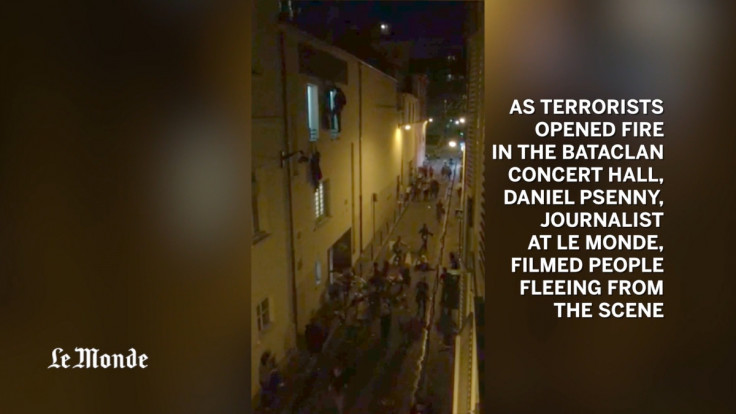Paris attacks: How amateur footage captured the atrocities in the absence of news teams
On 13 November, Islamic State (Isis) militants attacked Paris, killing 129 people. As news of the atrocities spread around the world, amateur video captured by eyewitnesses was heavily used to convey the horror that unfolded.
The first gunfire of the attacks at the Bataclan was recorded on a mobile phone. Amateur footage posted online from around 9.40pm local time shows Eagles of Death Metal performing on stage when suddenly gunshots can be heard.
Around the same time, televised coverage of the friendly football match between France and Germany at the Stade de France was interrupted by the sound of explosions.
Both these videos were relayed around the world in the wake of the Paris attacks on 13 November in which 129 people lost their lives. Initially innocuous footage that became a permanent record of the tragedy that followed.
As the situation developed on the night, people began to use their phones to cover the carnage taking place. In one of them, a young man can be seen running towards the stadium after the second explosion. He fully understands what he's doing and that people will want to see this video. He even narrates the footage, saying: "Just right now, just right now, second explosion. Live from the Stade de France."
Similar shaky footage is filmed from a window by another witness as police and the firefighters arrive at the Bataclan. "Many fire engines. Many ambulances. I don't know if people are wounded, you might have more information than me on the Internet," says the voice.

Harrowing footage
From all the amateur videos that spread over social media, one in particular became the iconic image that summarised the carnage. The footage of people running and screaming as they escape the massacre inside the Bataclan filmed by Daniel Psenny, a journalist with Le Monde newspaper, who lives in an apartment behind the concert venue.
Psenny was wounded when a bullet struck him in the left arm, after leaving his flat to help injured people on the street. His video has been viewed millions of times, retweeted and reposted online by thousands of media outlets around the world.
By the next day eyewitness videos like these were everywhere, making headlines across the globe. The eyewitness videos become the key way for news outlets to tell the story of the tragedy and would prove vital once again when the police siege in Saint-Denis took place a few days later.
Paying the price
On Wednesday 18 November, French military and police surrounded a building in the Paris suburb of Saint-Denis holding the Islamist militant ringleader Abdelhamid Abaaoud. Three assailants were killed, including Abaaoud and a woman who detonated a suicide bomb.
As with the night of the attacks, media outlets are too late to capture the events of the siege. And so once again, amateur footage played a vital role in telling the story.
As reported by Le Petit Journal, a French TV show that specialises in political and media analysis, a strange market took place in Saint-Denis after the siege. Almost akin to a drug deal, the footage shows hungry journalists crowding around a group of locals youths to purchase the amateur footage they filmed – a few seconds of recorded gunfire in exchange for anything between €200 and €500.
An English journalist can be heard saying in one of the videos: "It has been an ongoing thing. I've handed over €250 and now I'm handing over €200. We have four videos so it's quite good".
As this incident shows, amateur footage played a crucial role in the reporting of the attacks in Paris and the subsequent police and military siege in Saint-Denis. From initial eyewitness videos capturing the confusion on 13 November to amateur footage filmed by locals on 18 November and sold to the highest bidder, never before has an event in the western world relied so heavily on amateur video and eyewitness accounts to help paint the full horror of what took place.
© Copyright IBTimes 2025. All rights reserved.




















